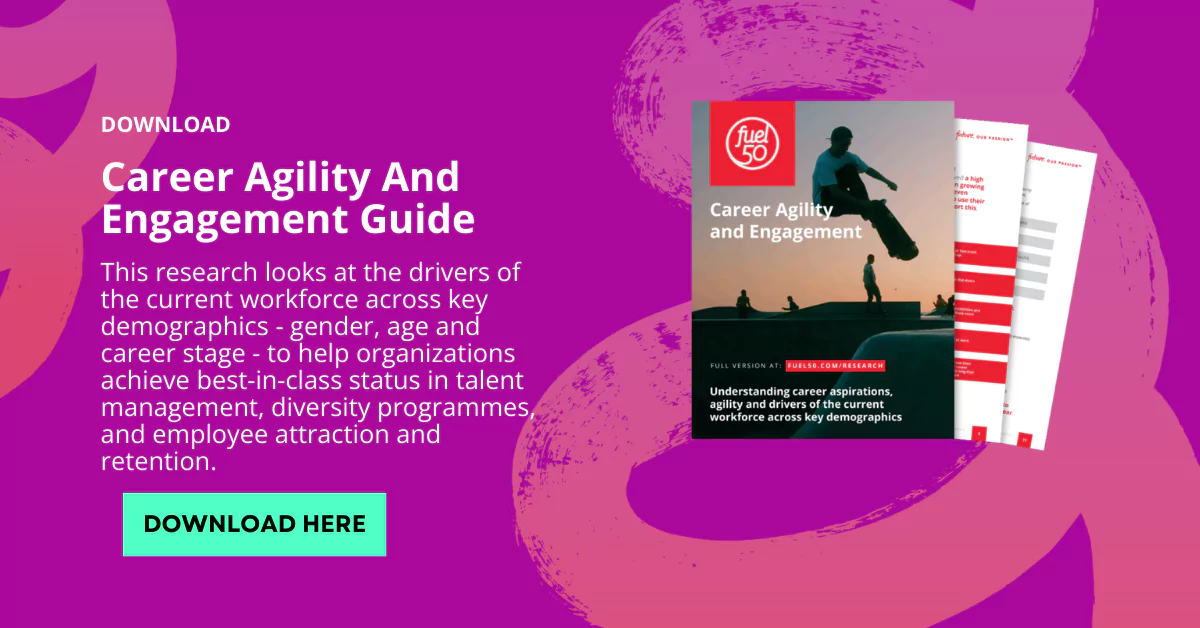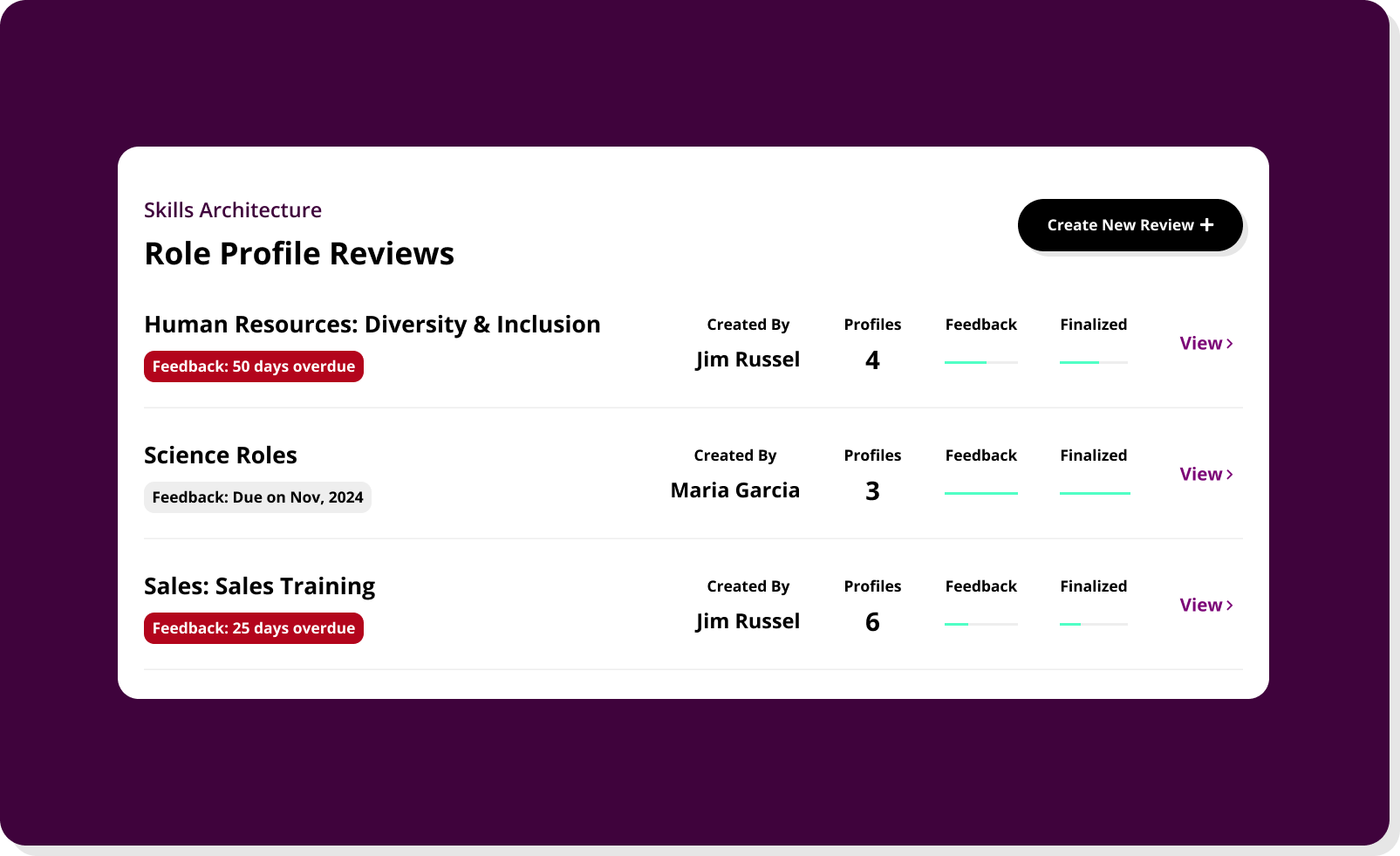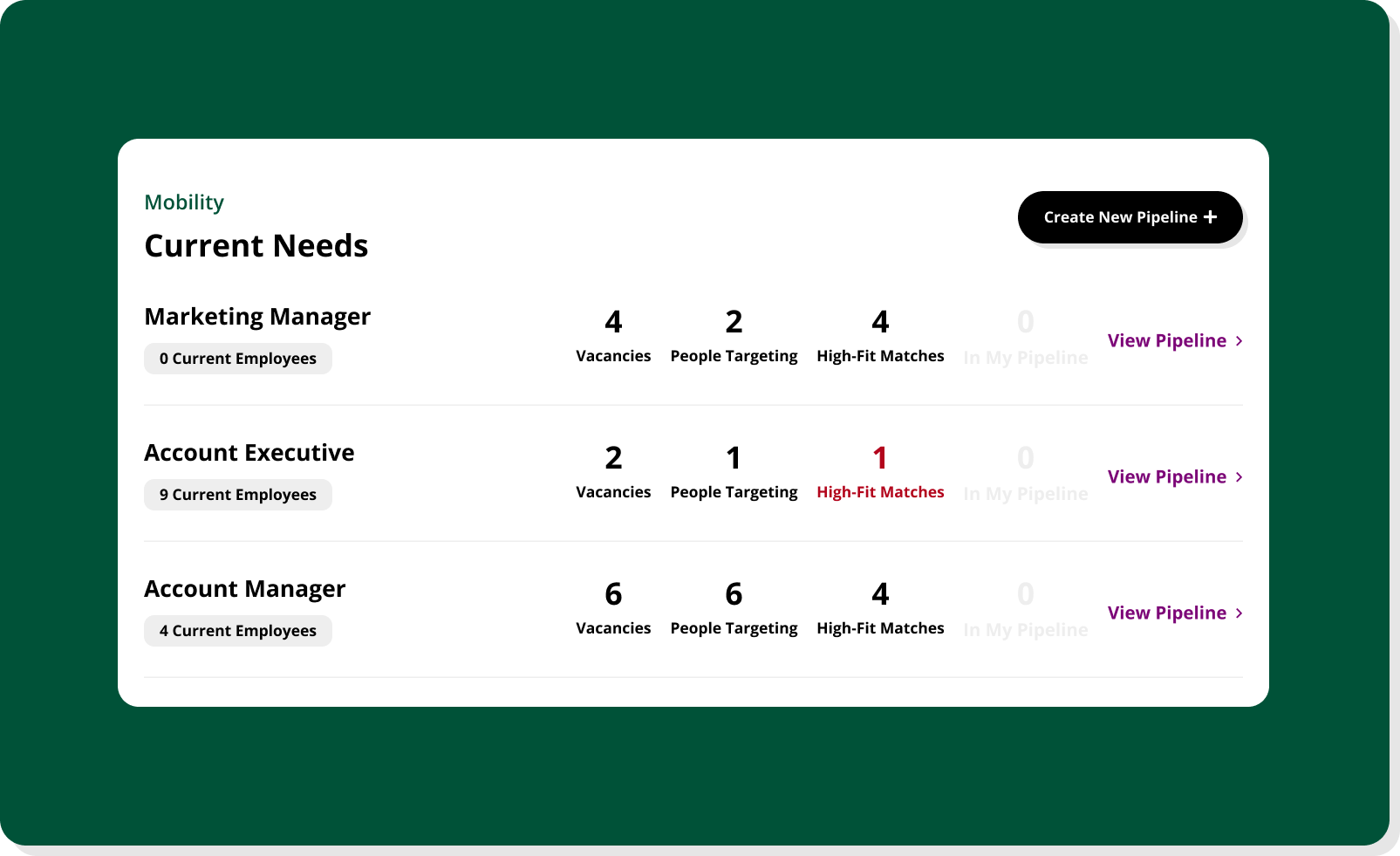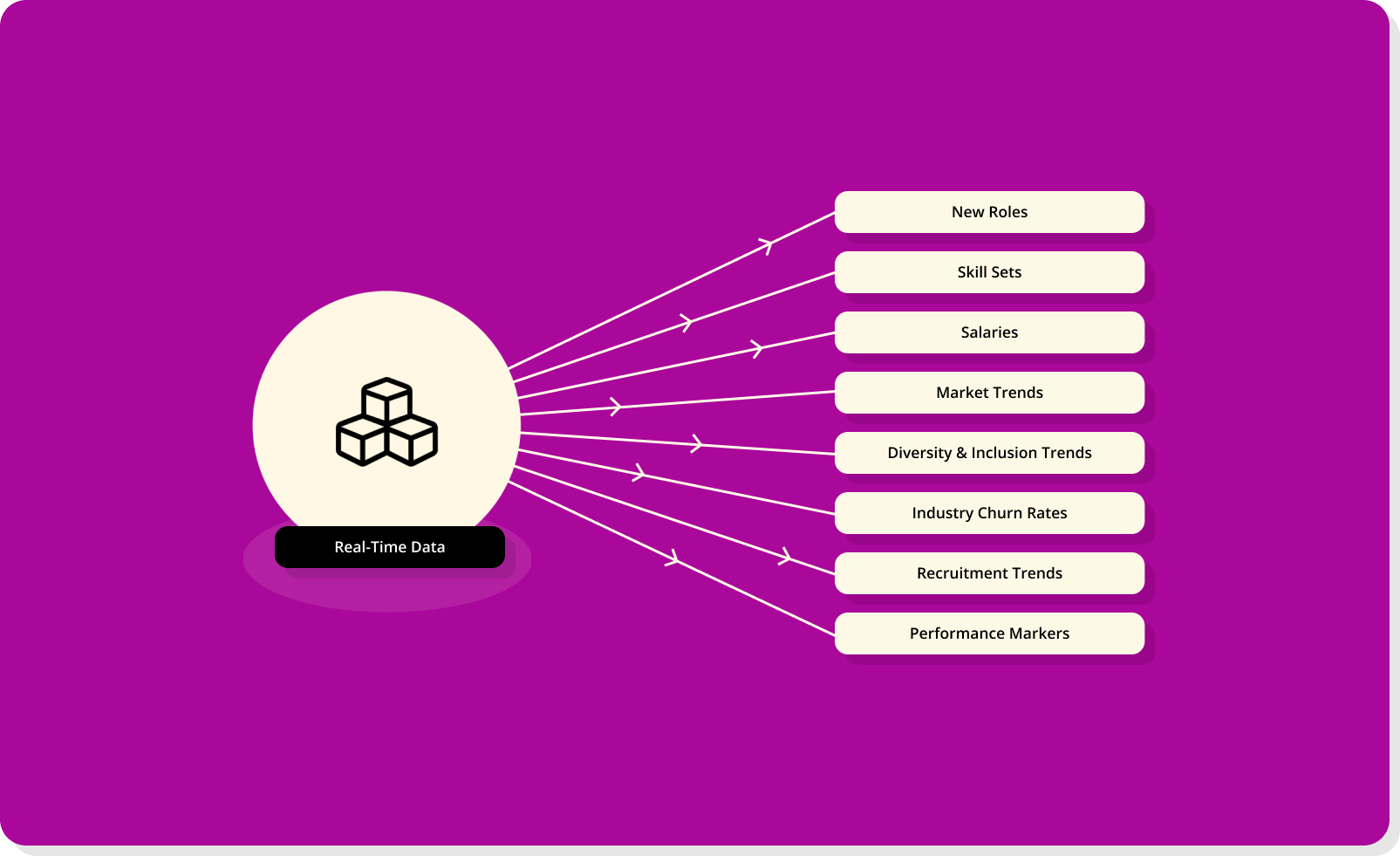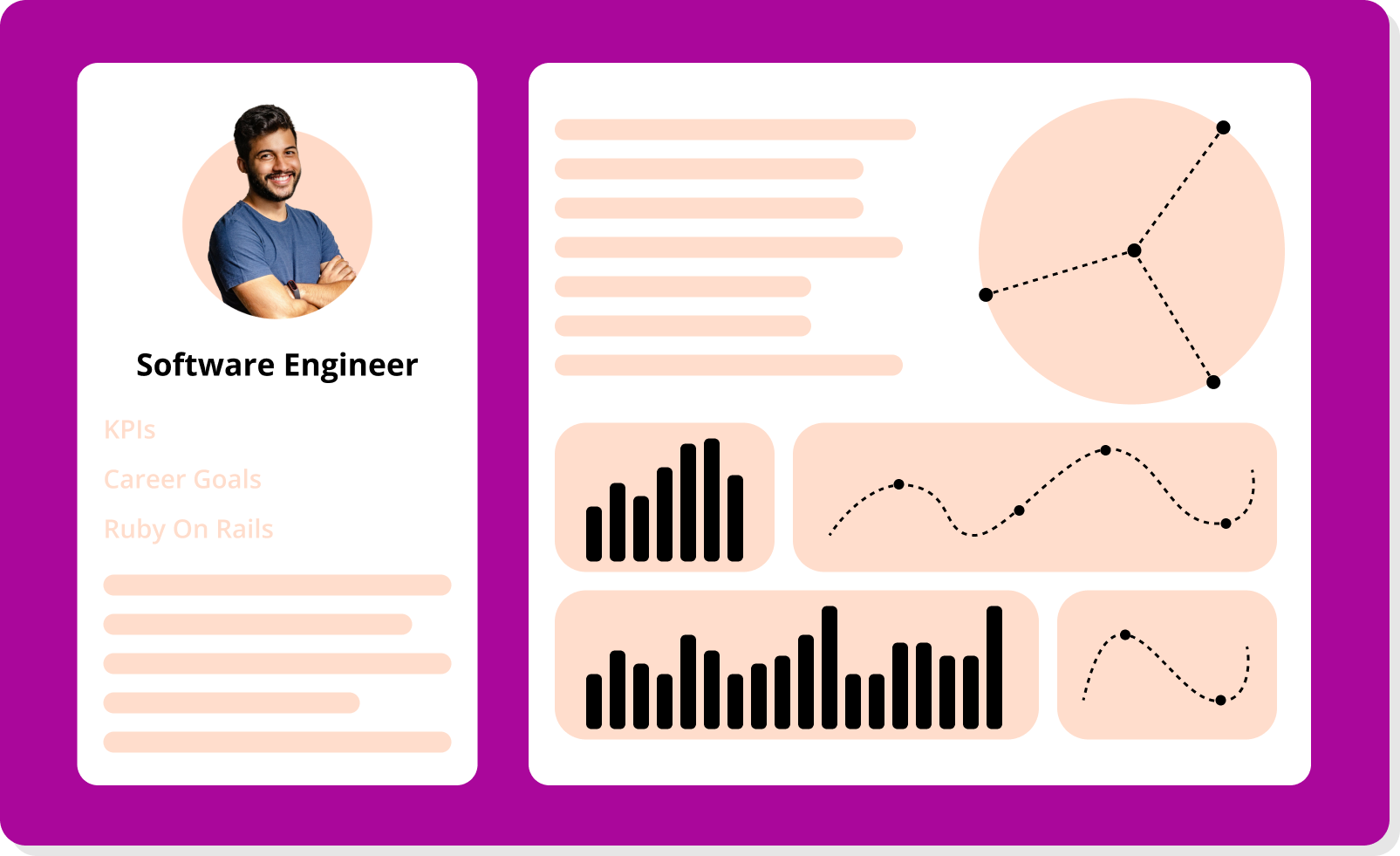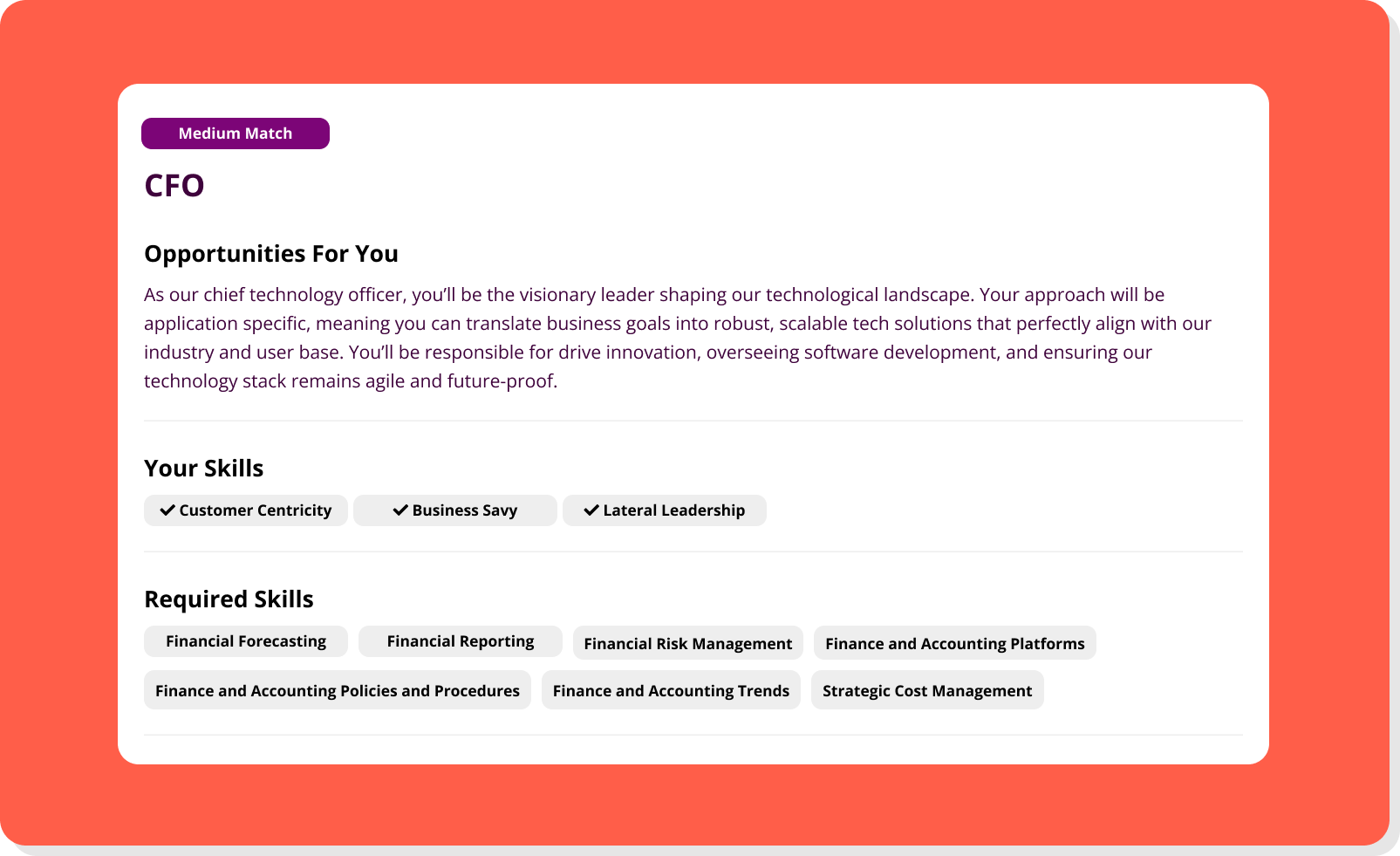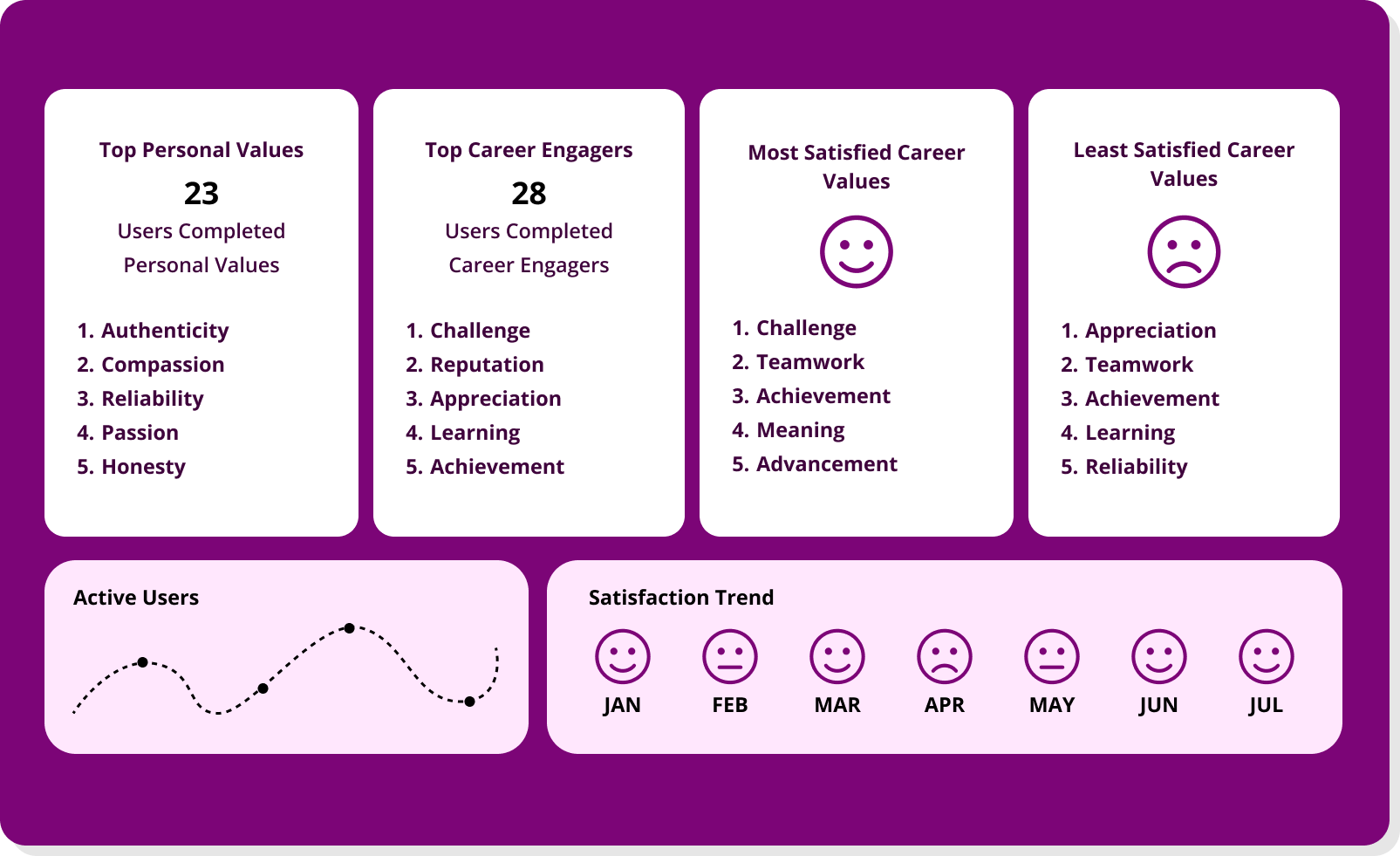“Building a future-ready workforce” has become a popular talking point—but most companies still aren’t doing the hard part: defining the skills they need, assessing the ones they have, and creating a repeatable system to close the gap.
Instead, they rely on surface-level development programs and scattered learning content. Then, skill gaps keep widening, growth conversations stay vague, and employees leave—not because they want to, but because they can’t see a way forward.
What actually works is a structured approach to upskilling and reskilling—one that ties skill development to real roles, makes career paths visible, and gives leaders clear data on who’s ready to move.
In this article, we’ll break down how three organizations moved beyond theory and built upskilling programs that drive retention, mobility, and measurable business impact. Here’s what they did differently—and how you can apply it.
What is an upskilling program?
An upskilling program is a structured way to help employees gain new, relevant skills that make them more effective in their current role—or prepare them for growth into the next one.
The key word here is growth. Unlike one-off training or compliance checkboxes, real upskilling is part of a long-term strategy. It’s about future-proofing your people and giving them the tools to adapt as their roles evolve.
This could look like:
- A marketer learning advanced analytics to better measure campaign ROI
- A frontline manager developing leadership and coaching skills
- A customer success rep building product knowledge to drive upsells
In all of these cases, the person isn’t changing jobs—they’re getting better at the one they have now or preparing for what’s next.
Effective upskilling isn’t reactive, it’s proactive. It anticipates what the business will need six months or a year from now and builds those capabilities before they become gaps.
What is the difference between upskilling and reskilling?
While the terms are often used interchangeably, upskilling and reskilling solve very different problems.
Upskilling helps someone grow within their current career path by building on the skills they already have. It’s about getting better at the work they’re already doing—or preparing for a more advanced version of it. For instance, a recruiter who learns how to use AI sourcing tools is upskilling. They’re becoming more effective in the same role.
Reskilling, on the other hand, prepares someone to move into an entirely new type of role that requires a different skill set. That same recruiter might decide to transition into a people analytics or HR business partner position. To do that, they would need to develop capabilities in data analysis, reporting, and strategic workforce planning.
In short, upskilling builds depth within a function, while reskilling opens doors to entirely new career paths. A future-ready workforce requires both.
Why are upskilling programs important?
Most companies wait too long to take upskilling seriously. They react after the skill gaps show up in declining performance, stalled innovation, or failed hiring efforts. By then, the cost is already high—lost productivity, missed opportunities, and higher attrition.
Proactive upskilling programs solve all of these problems before they reach a breaking point. Here’s why they matter:
1. Skill gaps are widening faster than roles can adapt
Across nearly every industry, roles are evolving faster than most organizations can keep up. Digital transformation, AI adoption, regulatory shifts—these aren’t theoretical trends. They’re daily realities changing the nature of work.
Yet many companies are still relying on outdated job architectures and legacy training that no longer match the skills employees actually need to succeed.
According to LinkedIn’s 2024 Workforce Learning Report, the top priority for L&D leaders is closing skill gaps—because they’re seeing firsthand that business goals are outpacing workforce capabilities. Without upskilling, your people fall behind, and so does your organization.
2. Hiring your way out of the problem is slow and expensive
The traditional response to a skills shortage is to hire someone new. But in today’s market, that’s not a sustainable strategy.
- External hiring takes longer. Time-to-fill for technical and strategic roles has grown significantly.
- It’s more costly. Hiring someone from the outside often requires higher compensation and onboarding costs.
- It’s risky. Cultural fit, ramp time, and performance uncertainty all add friction.
Upskilling, by contrast, builds talent from within. You’re investing in people who already understand your culture, tools, and business model—and who are often eager for a path to grow. It’s faster, cheaper, and more efficient than starting from scratch with every new skill needed.
3. Employees leave when they don’t see growth
Upskilling isn’t just about performance—it’s about retention.
When employees feel stuck or stagnant, they disengage. And when they don’t see a clear path forward, they start looking elsewhere. Fuel50’s internal data consistently shows that career development visibility is one of the strongest predictors of employee engagement and retention.
A well-designed upskilling program signals to your workforce: “We’re investing in you. You have a future here.” That’s powerful. Especially for high-potential talent who aren’t content to sit still.
Organizations that prioritize internal growth pathways don’t just fill skill gaps faster—they keep their best people longer.
4. The future belongs to companies that build talent, not just buy it
The most resilient, innovative companies don’t rely solely on external hires to fill gaps. They build robust, scalable systems to grow their talent from within—creating internal mobility engines that reduce turnover, speed up succession planning, and future-proof the business.
Upskilling is the foundation of that engine.
Let’s take a closer look at three companies that are doing it right—with upskilling and reskilling strategies that actually deliver results.
3 successful examples of upskilling and reskilling programs
It’s easy to talk about the value of upskilling and reskilling. It’s harder to implement programs that actually drive measurable change.
The following organizations didn’t just launch learning initiatives—they built full-scale talent strategies that aligned with their business goals, empowered their people, and delivered real results.
KeyBank: Building future-ready leaders through structured development
As digital transformation reshaped the banking industry, KeyBank recognized that preparing their workforce for the future couldn’t be left to chance—or to external hires alone. They needed to equip employees with the skills to lead through change, not just survive it.
Through Fuel50, KeyBank launched a talent marketplace that gave every employee visibility into their career path and skill gaps. From there, they rolled out targeted learning programs, including the Aspiring Leaders initiative—a structured academy designed to accelerate leadership readiness. Employees could self-assess, identify areas for growth, and engage in curated learning tied directly to future roles.
The impact was significant:
- More than 2,700 skill actions were completed.
- Training engagement rose by 60%.
- Participation in leadership development doubled.
Most importantly, employees began to see a clear path forward—one backed by investment, structure, and support.
Upskilling worked at KeyBank because it wasn’t generic. It was personalized, trackable, and built into the rhythm of the business.
Avalere Health: Scaling reskilling across a growing business
Avalere Health was growing fast—and not just organically. Through acquisitions and expansion, their workforce needs evolved rapidly. Hiring new people for every skill requirement wasn’t sustainable, especially in a specialized industry where the external talent pool was thin.
Rather than relying on external recruiting, Avalere focused inward. They used Fuel50 to map the skills of their existing workforce, uncover gaps, and create internal mobility pathways across teams and business units. Employees were empowered to explore new roles and reskill into them with clear guidance and development support.
Over time, Fuel50 became a central part of Avalere’s people strategy—not an add-on. The company set its sights on a 98% retention target, recognizing that the ability to grow talent from within was not just a nice-to-have but a competitive advantage.
What made their reskilling approach effective was that it wasn’t siloed. It was embedded in the way the business operated, scaled, and planned for the future.
CarTrawler: Creating transparency and autonomy around growth
At CarTrawler, employees consistently reported that they didn’t know how to grow within the company. There were opportunities, but no visibility into what they were or how to get there.
To address this, CarTrawler implemented Fuel50 as a single, centralized hub for career development. Employees could log in, see potential future roles, assess their current skills, and receive personalized recommendations to close any gaps. For many, it was the first time they could clearly see a future for themselves at the company—and know how to reach it.
The platform quickly became a “one-stop shop” for career growth, giving employees ownership over their development without waiting for a manager to initiate the conversation. That shift in transparency changed the tone of internal mobility—from abstract to actionable.
In CarTrawler’s case, reskilling wasn’t about mass retraining. It was about giving people the confidence and clarity to move forward—and the tools to do it well.
How to build a successful upskilling program based on what these companies did right
The companies above built upskilling and reskilling programs around clear principles—each one designed to make growth scalable, strategic, and employee-led. Here’s how they did it.
Start with skill data
Before you can close a skills gap, you need to know where it is. Each company began with a clear understanding of what skills existed in the workforce, what was missing, and where the business was headed. That meant using self-assessments, skill taxonomies, and real-time visibility—not outdated job descriptions or gut instinct. Without this foundation, even the best development content won’t move the needle.
Design for the employee journey
The most effective programs were personalized, not prescriptive. Employees had agency: They could see career paths, explore future roles, and follow a development journey tailored to their goals—not just what their manager told them to do. This shift from top-down training to self-directed growth increased engagement and made development feel relevant.
Embed learning into the flow of work
None of these companies treated upskilling as a siloed activity. It was connected to daily work—through stretch assignments, mentoring, gig projects, and career conversations. This made learning real. Employees weren’t just watching courses; they were building skills they could immediately apply in the context of their current or future roles.
Make everything visible and trackable
Visibility changed the game. Employees could see their progress, understand exactly what they needed to grow, and feel recognized for it. Leaders could track development activity, identify future-ready talent, and support mobility at scale. Nothing lived in a black box. Growth was transparent and data-driven.
How Fuel50 helps you build a high-impact upskilling and reskilling program
Building an effective upskilling or reskilling program takes more than just content. It requires a system—a framework that connects the skills your people have today to the capabilities your business needs tomorrow. Fuel50 is purpose-built to help you do exactly that.
Rather than offering piecemeal features or disconnected tools, Fuel50 delivers a fully integrated platform that makes skill development personal, scalable, and measurable across your entire workforce.
Here’s how Fuel50 brings upskilling and reskilling to life inside your organization.
Personalized skill assessments that surface gaps and growth paths
You can’t close skill gaps if you don’t know where they are. Fuel50’s skills framework begins with personalized self-assessments that help employees identify their current strengths, skill gaps, and development needs. These assessments are mapped against clearly defined role profiles—tailored to your organization’s structure—so they reflect real-world requirements, not abstract capabilities.
For example, an employee in a marketing role might see how their current skills align with future roles like Brand Manager or Growth Strategist—and what skill development is needed to get there.
From a workforce planning perspective, these insights are just as powerful. HR and leadership teams gain visibility into where talent is strong, where gaps exist, and how to prioritize development investments accordingly.
A dynamic, AI-powered talent marketplace that activates growth
Identifying skills is only the first step. Fuel50’s talent marketplace turns insight into action by connecting employees with personalized growth opportunities inside your organization.
Once employees complete their skill assessments, Fuel50 uses AI to match them with relevant development opportunities—open roles, short-term gigs, stretch projects, learning modules, or mentoring relationships—based on their career aspirations and targeted skill development. These recommendations are updated dynamically as people grow, making the experience feel responsive, not static.
This makes development tangible. Instead of just saying “grow your skills,” Fuel50 shows employees exactly where to apply those skills inside the business—reinforcing internal mobility, building confidence, and accelerating time to readiness for new roles.
This also helps HR and business leaders maximize internal talent before turning to external hiring—saving time and reducing cost-per-hire.
Transparent role libraries and career pathing to retain top talent
One of the most common reasons people leave organizations is lack of clarity around their future. They don’t see what growth looks like, or how to get there. Fuel50 solves that by making career pathing visible and intuitive for every employee.
Through Fuel50’s role libraries, employees can explore potential next roles, understand the skills required, and compare their current capabilities against the expectations of future positions. These role profiles are completely customizable to your organization’s needs—whether you want to emphasize technical skills, leadership behaviors, or organizational competencies.
Employees can chart multiple possible paths—not just upward mobility, but lateral moves into adjacent functions, or full career pivots via reskilling. This flexibility supports career development for everyone—not just high-potentials or senior staff.
By giving people a clear line of sight into what’s possible, Fuel50 turns career conversations from vague aspirations into actionable plans. And that clarity drives retention.
Learning, mentoring, and gigs embedded into development journeys
Too often, learning is separated from career strategy. Employees complete courses, but don’t know how it connects to their goals—or what to do next. Fuel50 bridges that gap by embedding learning directly into each employee’s development journey.
Based on their skill assessments and chosen career path, employees receive targeted learning recommendations—from curated internal content, external libraries (via integrations like LinkedIn Learning or Degreed), or your own training programs. But it doesn’t stop there.
Fuel50 also surfaces live opportunities to apply those skills, like short-term internal gigs, cross-functional projects, or mentoring relationships. A marketer looking to build strategic skills might be matched with a product team’s initiative. A frontline manager preparing for a broader leadership role might be paired with an executive mentor.
This integration of learning, application, and feedback ensures that upskilling is grounded in real work, with real outcomes.
Real-time visibility and workforce analytics to guide decision-making
Behind every individual journey is a layer of organizational intelligence. Fuel50 gives HR, L&D, and business leaders real-time visibility into workforce capability, engagement with development, and readiness for internal mobility.
Dashboards and analytics show how skills are evolving across teams, where demand is outpacing supply, and which development programs are having the most impact. You can track who’s participating in learning, who’s progressing toward role readiness, and where skill-building efforts are stalling.
This level of insight allows you to shift from reactive workforce planning to proactive talent strategy. You can support succession planning, de-risk attrition, and make smarter decisions about where to invest in external hiring vs. internal development.


